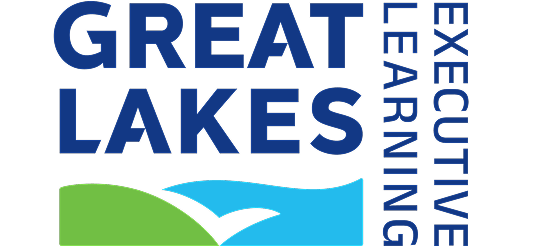The term SEO refers to the process of optimizing a website for search engines. It is a comprehensive approach to optimizing a website for organic (unpaid or free) traffic from search engine results pages (SERPs). SEO is a collection of tools and best practices that enable your website to rank higher in search engine results pages (SERPs), resulting in an increase in traffic. Simply said, SEO is a technique for increasing traffic from free and organic searches on search engines. If you want to understand more about digital marketing, SEO is a must-know. You will also learn more about what SEO is in digital marketing and how it works.
It is the process of upgrading your site's structure and content, as well as doing promotional efforts, to boost traffic and, as a result, rank higher on search engine result pages.
How search engines work?
Crawlers are used by all search engines to locate relevant web pages for their algorithmic search results. These crawlers, also known as spiders or search engine bots, use powerful search engine algorithms to explore millions and billions of pages to provide a set of high-quality SERP results. Are you interested in learning more about how search engine algorithms work? Let's talk about it.
- Crawl- They comb the Internet for relevant content, paying great attention to the code and content of each URL they encounter.
- Index- They index information after storing and organizing it through crawling. A page is approved for inclusion in the SERPs after it has been indexed.
- Rank- They rank the results based on the quality of the information, which implies that the sites are ordered from most relevant to least relevant.
SEO is basically divided into two parts: ON-Page SEO and OFF-Page SEO.
On-Page SEO: It refers to all the steps or tactics taken by website owners to generate traffic and rank their sites higher in search engine results pages. Within the website, you deal with the aspects of SEO that you have control over, such as meta tags, technical tags, content quality, and so on. As a result, there should be no delay in addressing on-page SEO concerns to preserve and increase ranking.
Some important On-Page SEO factors are as described below-
- Meta Tags- HTML tags that contain meta data and provide information about a webpage's content are known as meta tags. They describe the page's content, when it was last modified, and who authored it. This information is crucial for SEO because it aids search engine crawlers in understanding and indexing the page.
These tags, such as the head> meta tag/head>, are inserted within the head section of an HTML page. Users who visit your site will not see these tags, but they will be visible to search engines when they index and rank your site.
Meta tags are divided into three categories:
- Meta Title-The title tag, which is also your page title, is known as the meta title. In search engine result pages, it shows in the title bar of the browser window.
- Meta Description Tag-The meta description tag is a synopsis of the material on your page. When your URL appears on the search engine result pages in response to a user's search query, it appears below the URL of your page.
- Meta Keywords Tag-This meta tag contains all your essential keywords that are relevant to the content of your page.
- Page Length- Long pages are ranked higher by search engines than short pages. It is well acknowledged that users are dissatisfied with basic information. Instead, they anticipate a thorough explanation.
- Outbound Links- You can include links to other websites that provide similar information on your page. It could be a factor in Google's trustworthiness.
- Internal Links- Interlinks your popular pages to new pages, allowing visitors to be routed from one page to another.
- Canonical Tag- This element is used to avoid duplicate content issues that can occur when two URLs contain similar content. It informs Google that two or more pages with comparable content are equal and belong to the same source.
- Image Optimization- The image must be optimized with alt text, a description, and other elements. Furthermore, rather of labelling your image "image1.jpg," use descriptive filenames like "boy-playing-in-the-park.jpg."
- Sitemap- A sitemap is a list of all the pages on a website. It aids search engines in indexing your site's pages.
- Content- Your pages' content should be distinctive, relevant, and up-to-date, and it should be related to frequently searched themes, keywords, and so on.
- URL Optimization- Use hyphens '-' to separate various portions of the URL if your URL is longer than 255 characters. It should also be concise, descriptive, and include your primary keywords. Also, make categories in the URL structure to make it easier for search engines and users to find the material.
- Mobile Friendliness- Mobile phones and other similar devices account for over 60% of Google searches. As a result, make certain that your website is mobile-friendly.
Off-Page SEO: Off-page optimization differs from on-page optimization in that it has the same goal of increasing traffic. We deal with elements under our control, i.e., within the website, in On-Page SEO, while actions taken outside the site, which are not within the control of a website owner, such as blog submission, article submission, forum posting, and so on, are taken in Off-Page SEO.
Off-Page SEO strategies are primarily concerned with boosting the number of links to a website, a process known as link popularity. These are either internal or external connections. External links come from other websites or webpages, whereas internal links come from your own. High link popularity implies that your site has a lot of connections, which is good for SEO. The following are some essential off-page SEO tactics for increasing link popularity:
- Influencer Outreach- If your content is original, timely, and relevant, you should share it with industry influencers.
- Guest Posting- Many authors and bloggers will accept your post or content as a guest post on their sites. You can upload quality material there to obtain backlinks from them if you have written it.
- Social Bookmark- Many social bookmark submission platforms exist where you may upload your webpage or blog post with a link to your site to increase traffic to it.
- Forum Submission- In this method, you participate in forums related to your business, websites. Here, you can reply to threads, answer questions and queries, and provide feedback and suggestions. For better results use, "Do-Follow" forums.
- Article Submission- You use this strategy to participate in forums and websites linked to your business. You can respond to discussions here, as well as answer questions and provide feedback and suggestions. Use "Do-Follow" forums for better results.
- Video Submission- You can obtain backlinks by making videos with suitable titles, descriptions, tags, and reference links and submitting them to video submission platforms.

